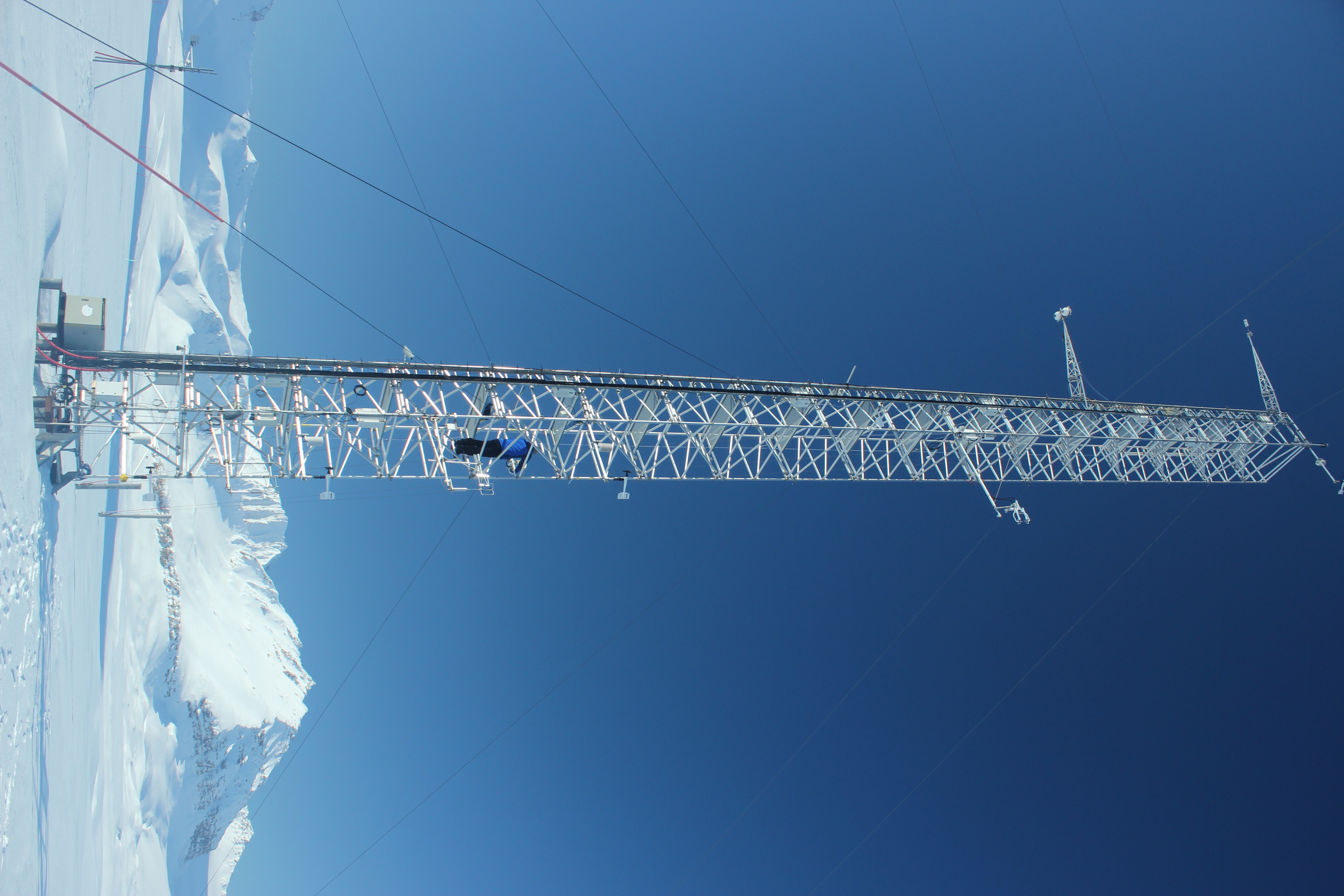CNR
Type of resources
Available actions
IADC Research Activities
Topics
Keywords
Contact for the resource
Provided by
Years
Formats
Representation types
Update frequencies
status
Scale
-

Snow and surface characteristics are monitored by CNR at the Climate Change Tower in Ny-Alesund. Partly funded by Arctic PASSION project (agreement number 101003472).
-

ISotopic and physical-chemical MOnitoring of GLACial drainages and sea water in the Ny-Ålesund area (Svalbard) (ISMOGLAC) Sampling and in-situ measurements on snow and water, performed into both Kongsfjorden and glacial streams that originate in supraglacial, englacial and subglacial zones of different glaciers (Midtre Lovenbreen, Austre broggerbreen, Vestre Broggerbreen, Kongsvegen). Dataset concerns water isotopes signature of snow and Kongsfjorden water and physical-chemical data of the latter.
-

ISotopic and physical-chemical MOnitoring of GLACial drainages and sea water in the Ny-Ålesund area (Svalbard) The project concerns an isotopic and physical-chemical monitoring of inland glacial drainages and ocean water into Kongsfjorden. It is aimed at defining the dynamic processes of the glacial melting and evaluating the consequent transfers of fresh water towards the Arctic Ocean. The dataset includes the continuous measurements (1 data/15 min) performed during summer season by a CTD diver. Parameter: Temperature, electical conductivity, water level.
-

Atmospheric Gondola for Aerosol Profiles (AGAP) The scientific goals of AGAP are to develop novel aerosol payloads and evaluate the vertical distribution of aerosol properties in the Arctic Boundary Layer. Dataset consists in Aerosol vertical profiles gridded at a 50 m spatial resolution: R, T, P, RH, Aerosol size distribution, BC concentration, O3. Maximum altitudes 1500 m.
-

Atmospheric Gondola for Aerosol Profiles (AGAP) The scientific goals of AGAP are to develop novel aerosol payloads and evaluate the vertical distribution of aerosol properties in the Arctic Boundary Layer. Dataset consists in Aerosol vertical profiles gridded at a 50 m spatial resolution: R, T, P, RH, Aerosol size distribution, BC concentration, O3. Maximum altitudes 1500 m.
-

The column water vapor or Precipitable Water Vapor (PWV) is measured at Thule Air Base (76.5°N, 68.8°W), Greenland, by means of a ground-based millimeter-wave spectrometer (GBMS) installed at 220 m a.s.l. The GBMS observes rotational lines of atmospheric molecules emitting between 230 and 280 GHz, with a spectral pass band of 600 MHz. The PWV is calculated from direct measurements of atmospheric opacity (tau) at the indicated frequencies by using the linear relation PWV = a+tau*b, where a and b depend only on frequency. Measurements have a temporal resolution of 15 minutes and are carried out continuously when the GBMS is operated.
-

pH tipping point in Svalbard (pHinS) The project is focused on carbonate chemistry in the fjord and measure how meltwater, icebergs and freshwater runoff affects the acidity of coastal seawater. Acquisition of CTD profiles and seawater samples at discrete depths (surface, bottom and 1-3 intermediate depths) to determine pH, total alkalinity, dissolved inorganic carbon, dissolved oxygen, nutrients, dissolved organic carbon. Collection of samples from icebergs and streams to determine the same set of parameters measured in the seawater. Some of the analysis were performed in the laboratory of the “Dirigibile Italia” Arctic station soon after the collection; others will be performed on preserved samples in ISMAR’s laboratories. 62 water column profiles of pressure, Temperature, salinity, dissolved oxygen, turbidity instrument: SBE19plus
-

Ice Nuclei Particle Concentration (INP) Ice nucleating particle (INPs) concentration obtained in spring and summer campaigns in the Arctic Region. Sampling lines allow the aerosol particles collection onto the filters and the sampling line for the continuos measurements of size distribution with the OPC and SMPS. The aim is to improve our understanding of aerosol-cloud-climate interactions and representation of climate models.
-

Measurements are obtained using a Pyrgeometer Kipp&Zonen, model CGR4, installed at Thule Air Base (220 m a.s.l.) in May 2013. The instrument sensitivity was determined during factory calibration for temperatures down to -40 °C, thus specifically suited for the polar environment. Data are acquired by a datalogger at 30 s time intervals and then transferred to a PC. The CGR4 and its dedicated PC are maintained by Daniela Meloni at ENEA.
-

Monitoring of Aerosol: Short and Long range source areas related to Climate Change (MAShLoCC) During the Arctic campaign 2010, an atmospheric aerosol sampling at the Gruvebadet observatory has been carried out in order to obtain information about the formation and composition of atmospheric aerosol, transport processes toward the Arctic zone as well as local and remote source areas. Instrument : ICP-SFMS, IRMS, Orbitrap